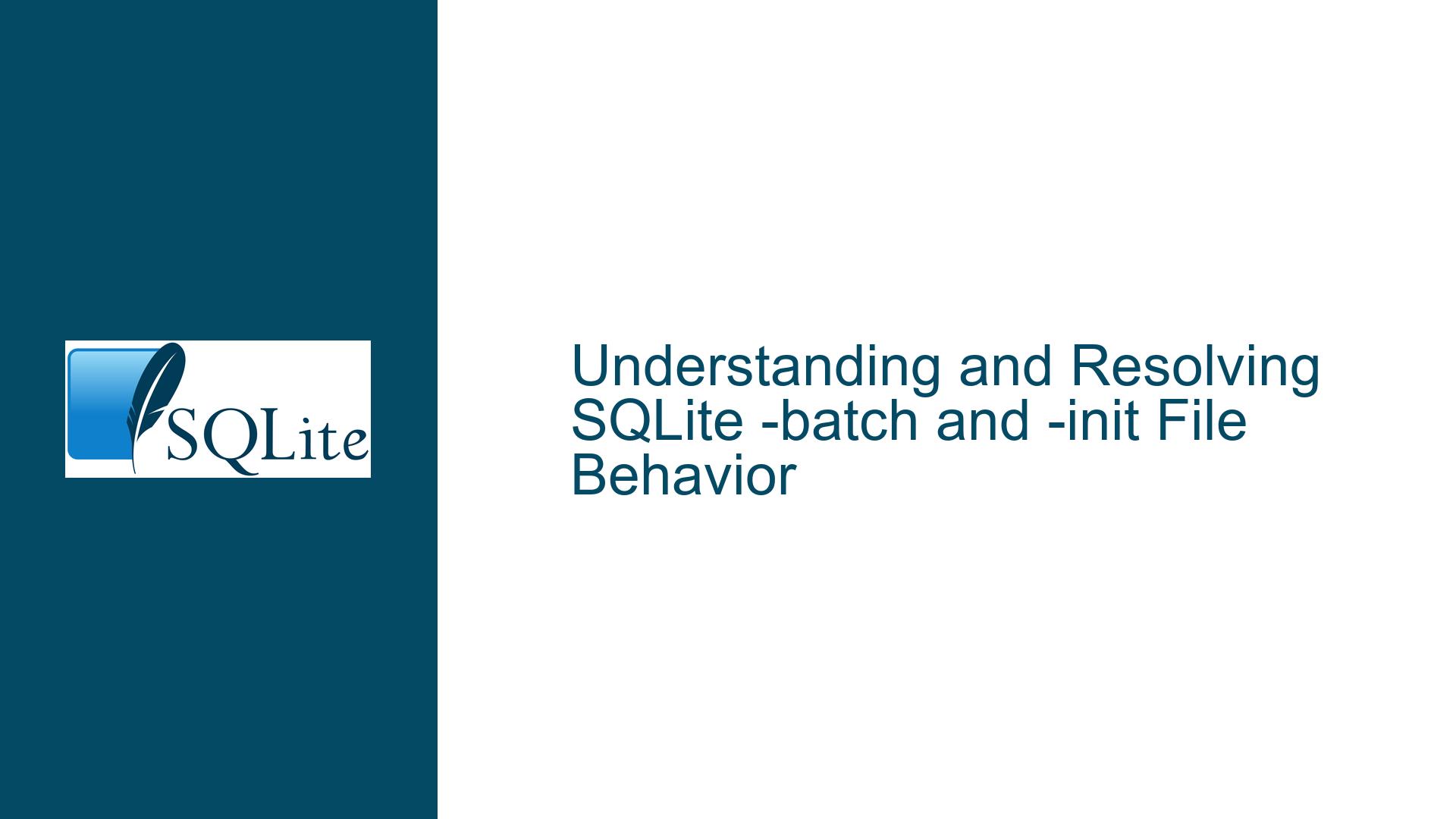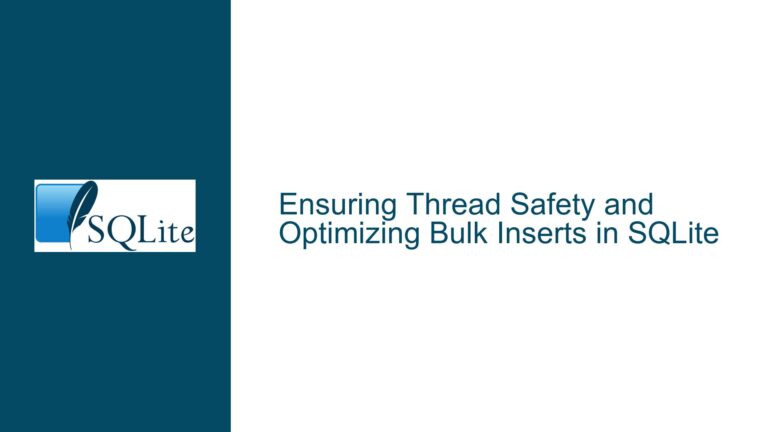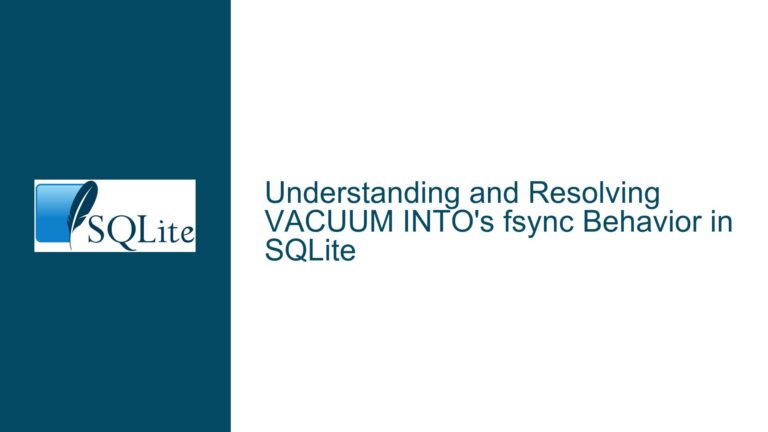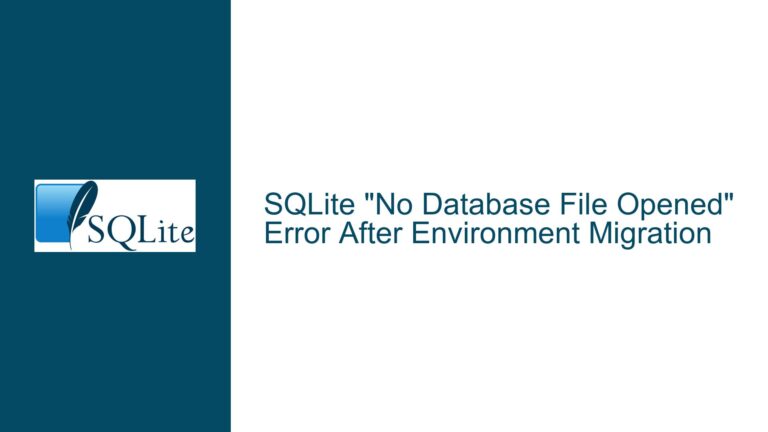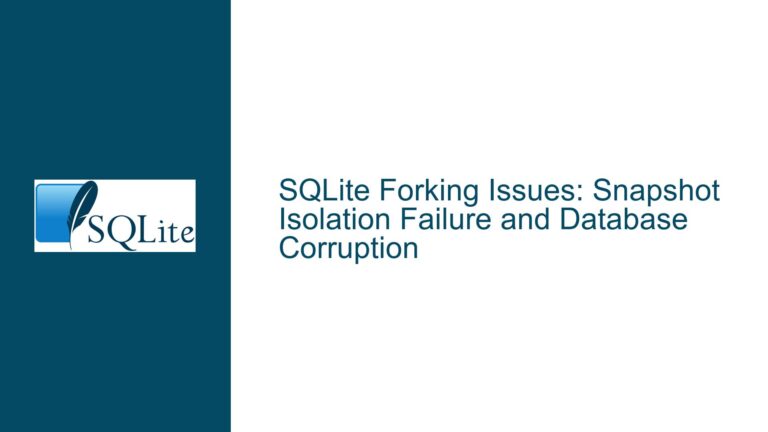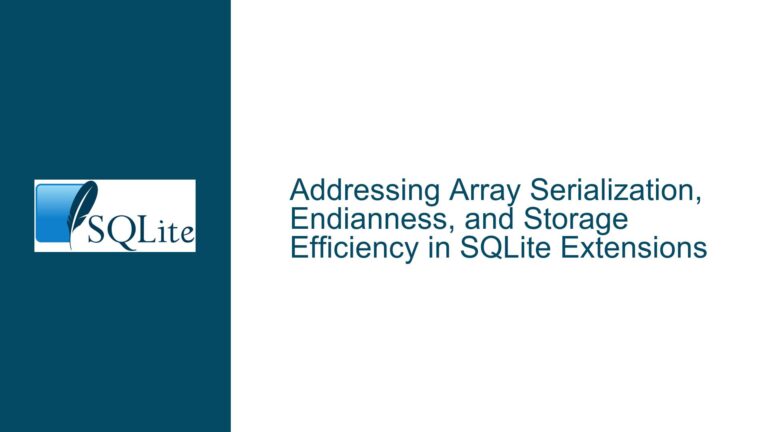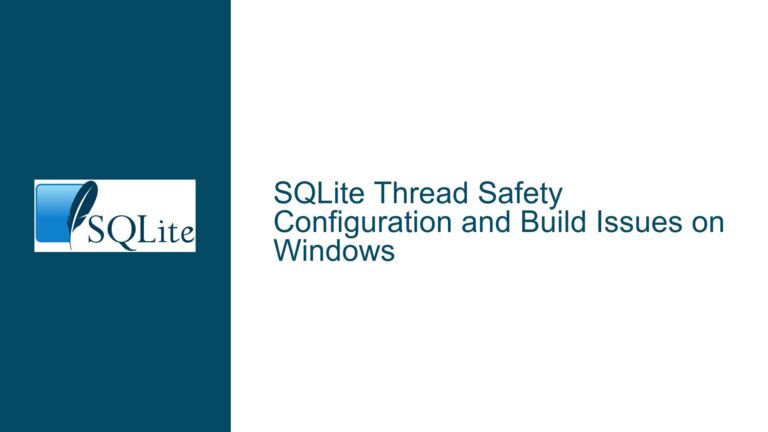and Resolving SQLite -batch and -init File Behavior
The Behavior of -batch and -init in SQLite Command-Line Interface
The SQLite command-line interface (CLI) is a powerful tool for interacting with SQLite databases, but its behavior regarding initialization files and batch mode can be confusing. The -batch and -init options are particularly nuanced, and their interaction with the .sqliterc initialization file is not well-documented. This post will explore the intricacies of these options, their intended behavior, and how to effectively manage initialization files in SQLite.
The -init option is used to specify an initialization file that SQLite should read upon startup. This file typically contains SQL commands or configuration settings that should be executed or applied before the user begins interacting with the database. The .sqliterc file, located in the user’s home directory, serves as the default initialization file if no other file is specified with the -init option.
The -batch option, on the other hand, is designed to run SQLite in batch mode, which is useful for running scripts or commands without user interaction. However, the relationship between -batch and the initialization file is not immediately clear. Contrary to some expectations, -batch does not prevent the reading of the initialization file; it merely suppresses the message indicating that the file has been read. This behavior can lead to confusion, especially when users want to avoid running any initialization commands.
The Confusion Around -batch and Initialization Files
The confusion arises from the expectation that -batch would prevent the reading of the initialization file altogether. This expectation is reasonable, as batch mode is often used in automated scripts where initialization commands might interfere with the intended operations. However, the current implementation of -batch does not fulfill this expectation. Instead, it only suppresses the message that the initialization file has been read, leaving the initialization commands to execute as usual.
This behavior can be problematic in scenarios where the initialization file contains commands that are not suitable for batch processing. For example, if the .sqliterc file contains commands that prompt the user for input or modify the database in ways that are not desired during batch processing, these commands will still be executed, potentially leading to errors or unintended consequences.
The suggestion to use -init /dev/null in conjunction with -batch is a workaround that effectively prevents the reading of the initialization file. By specifying /dev/null as the initialization file, SQLite is directed to read from a file that contains no data, thus avoiding the execution of any initialization commands. However, this workaround is not intuitive and requires knowledge of the underlying behavior of the -init option.
Effective Management of Initialization Files in SQLite
To effectively manage initialization files in SQLite, it is important to understand the behavior of the -init and -batch options and how they interact with the .sqliterc file. Here are some strategies for managing initialization files in different scenarios:
Avoiding Initialization Files in Batch Mode: When running SQLite in batch mode, it is often desirable to avoid executing any initialization commands. The most reliable way to achieve this is by using the
-init /dev/nulloption in conjunction with-batch. This ensures that no initialization file is read, and no initialization commands are executed.Selective Initialization: In some cases, you may want to execute certain initialization commands only in interactive mode and not in batch mode. One way to achieve this is by using conditional logic within the
.sqlitercfile. For example, you can check for the presence of the-batchoption and skip certain commands if it is present. However, this approach requires modifying the.sqlitercfile and may not be feasible in all situations.Custom Initialization Files: Another approach is to create custom initialization files for different scenarios. For example, you can create a
.sqliterc-batchfile that contains only the initialization commands that are suitable for batch processing. You can then specify this file with the-initoption when running SQLite in batch mode. This approach allows you to tailor the initialization commands to the specific needs of each scenario.Documentation and Best Practices: Given the confusion surrounding the
-batchand-initoptions, it is important to document their behavior and provide clear guidance on how to use them effectively. This includes updating the SQLite documentation to clarify the behavior of-batchand providing examples of how to avoid reading the initialization file in batch mode. Additionally, best practices for managing initialization files should be shared with the SQLite community to help users avoid common pitfalls.Feature Request for -noinit Option: As suggested in the discussion, adding a
-noinitoption to SQLite would simplify the process of avoiding initialization files. This option would explicitly prevent the reading of any initialization file, making it clear and straightforward to run SQLite without executing any initialization commands. This feature would be particularly useful in batch processing scenarios and would eliminate the need for workarounds like-init /dev/null.
In conclusion, the behavior of the -batch and -init options in SQLite can be confusing, especially when it comes to managing initialization files. By understanding the nuances of these options and employing effective strategies for managing initialization files, users can avoid common pitfalls and ensure that their SQLite sessions run smoothly. Additionally, updating the documentation and considering the addition of a -noinit option would further enhance the usability of the SQLite command-line interface.
